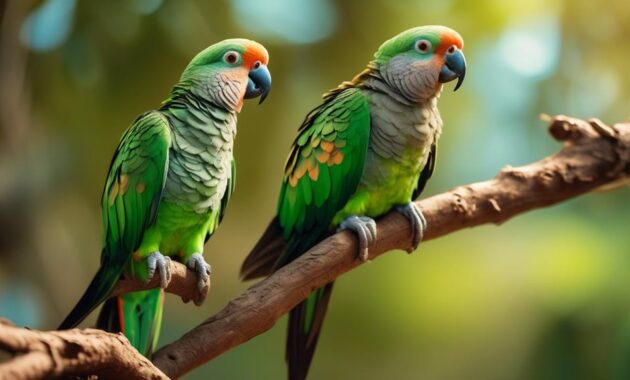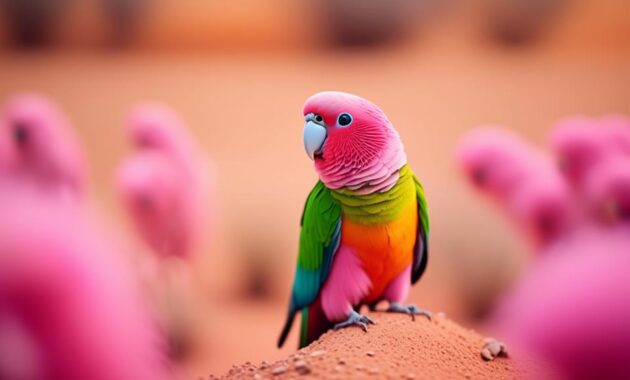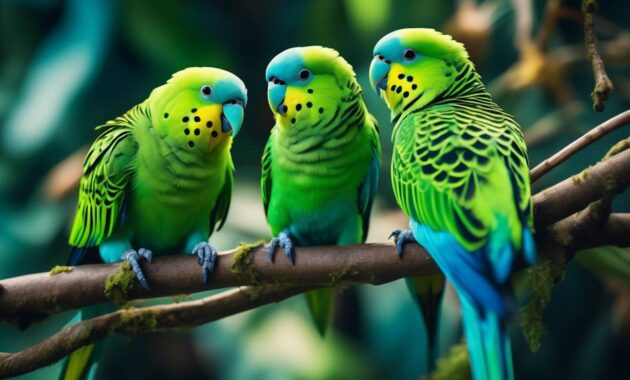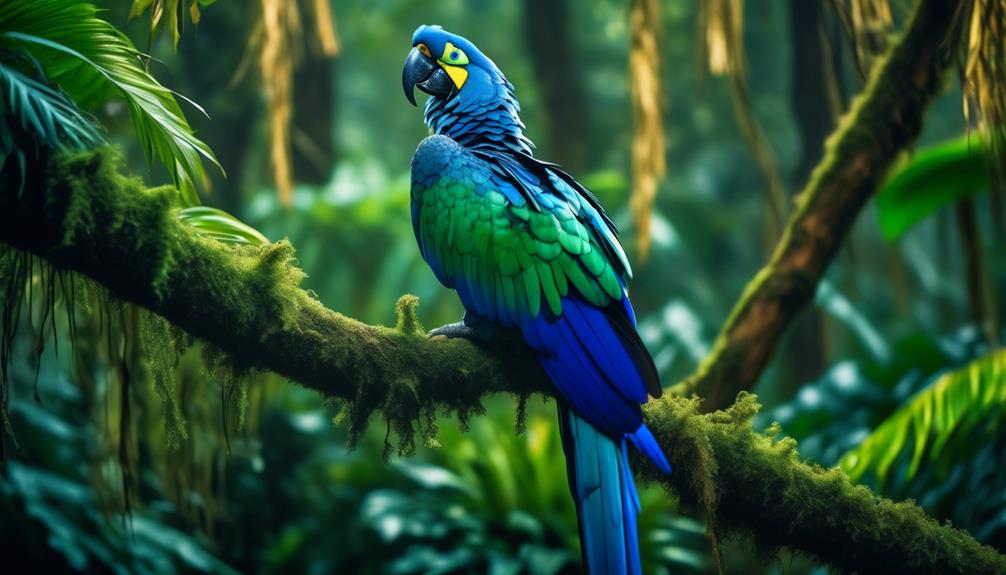
Are you prepared to enter a world where beauty and majesty collide? Imagine encountering a creature so rare and enchanting that it leaves you breathless. The Hyacinth Macaw, with its vibrant cobalt blue feathers and striking yellow accents, is a sight to behold.
But there is so much more to discover about this magnificent bird. From its impressive size to its unique habitat, from its mimicking abilities to its suitability as a pet, there is a wealth of knowledge waiting to be uncovered.
So, let’s embark on this journey together and unravel the captivating secrets of the Hyacinth Macaw.
Key Takeaways
- The Hyacinth Macaw is the largest flying parrot, measuring up to 3.3 feet in length and weighing up to 2.8 lbs.
- It is known for its striking cobalt blue color with yellow details and a prominent black beak.
- The Hyacinth Macaw is capable of mimicking words, sounds, and phrases, making it a suitable pet bird for apartment living.
- This majestic bird requires a diet consisting of fresh fruits and vegetables, macadamia nuts, and regular bathing to maintain healthy feathers and skin.
Description and Characteristics
The Hyacinth Macaw, a magnificent and rare bird, is known for its vibrant cobalt blue feathers and striking yellow details. With a size of up to 3.3 feet and a lifespan of 50-60+ years, it’s the largest flying parrot.
This species, belonging to the Macaw family, has a prominent black beak which is perfect for opening walnuts and other shelled nuts. The Hyacinth Macaw can mimic words, sounds, and phrases, often creating comical and goofy combinations of whispers and imitations. While generally not a noisy parrot, it’s suitable for apartment living.
In terms of care and feeding, their diet consists of coconut, fresh fruits and vegetables, macadamia nuts, and even cooked chicken or rice. Regular fresh water and bathing are necessary, as well as exercise and ample room outside the cage due to their large size.
Habitat and Native Region
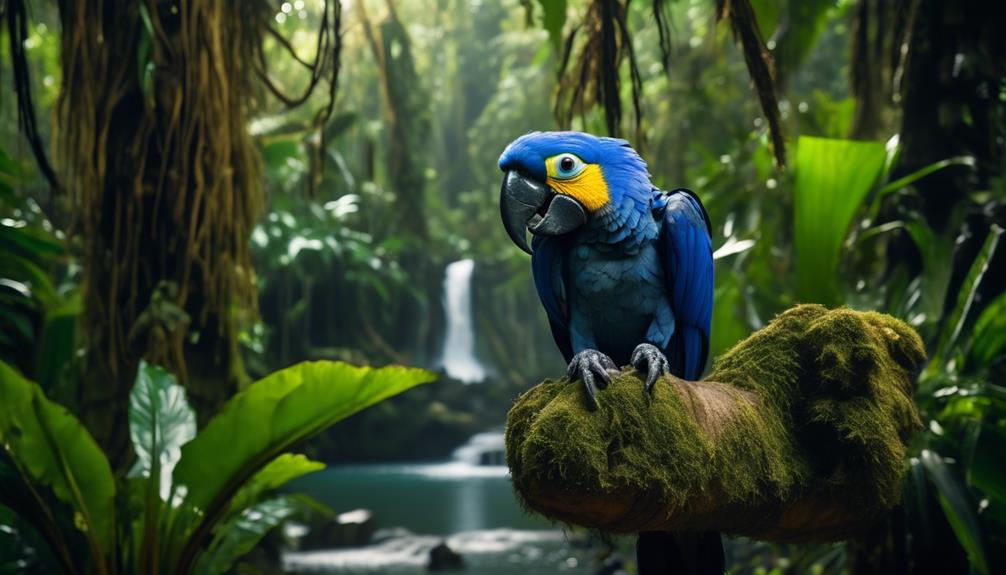
Hyacinth Macaws can be found in the Pantanal and Cerrado regions of Brazil, as well as in eastern Bolivia and northern Paraguay. These majestic birds prefer habitats such as palm groves, sparse woodlands, and semi-open areas. However, they don’t thrive in overly humid environments.
Hyacinth Macaws also require a source of fresh water nearby. The Pantanal and Cerrado regions provide the perfect conditions for these beautiful birds to flourish. With their vibrant cobalt blue feathers and striking yellow details, they add a touch of enchantment to these native regions.
Speech and Sounds
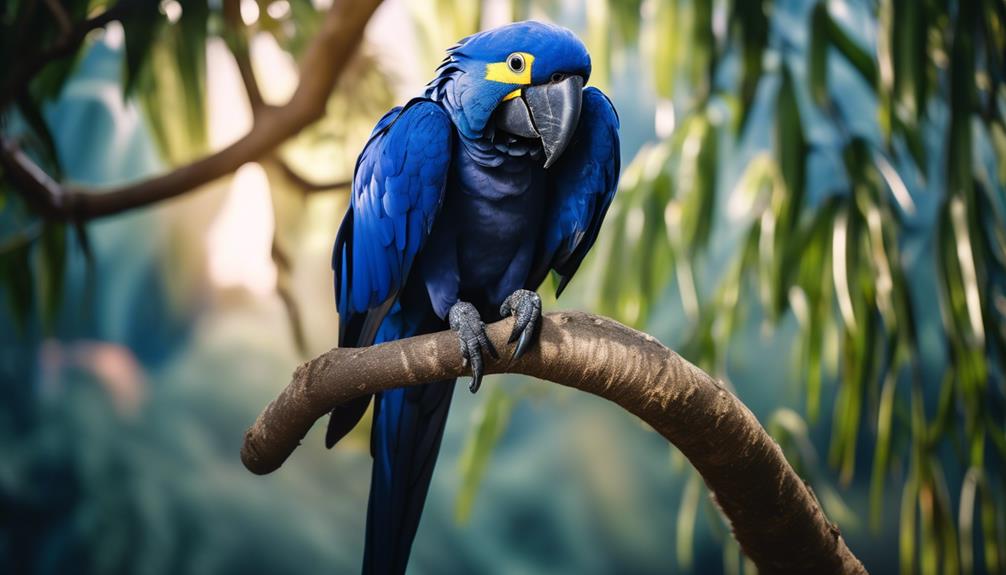
As we move on to discussing the speech and sounds of this majestic bird, you’ll be amazed by the unique vocal abilities of the Hyacinth Macaw.
- Their vocalizations are a combination of comical and goofy whispers and imitations, creating a playful and entertaining atmosphere.
- While they can learn to mimic words, sounds, and phrases, they’re generally not noisy parrots, making them suitable pets for apartment living.
- Their ability to produce a wide range of sounds, from gentle chirps to powerful squawks, adds to their charm and allure.
With their delightful vocal abilities, the Hyacinth Macaws are sure to captivate you with their entertaining sounds, making them a truly enchanting bird to behold.
Care and Feeding
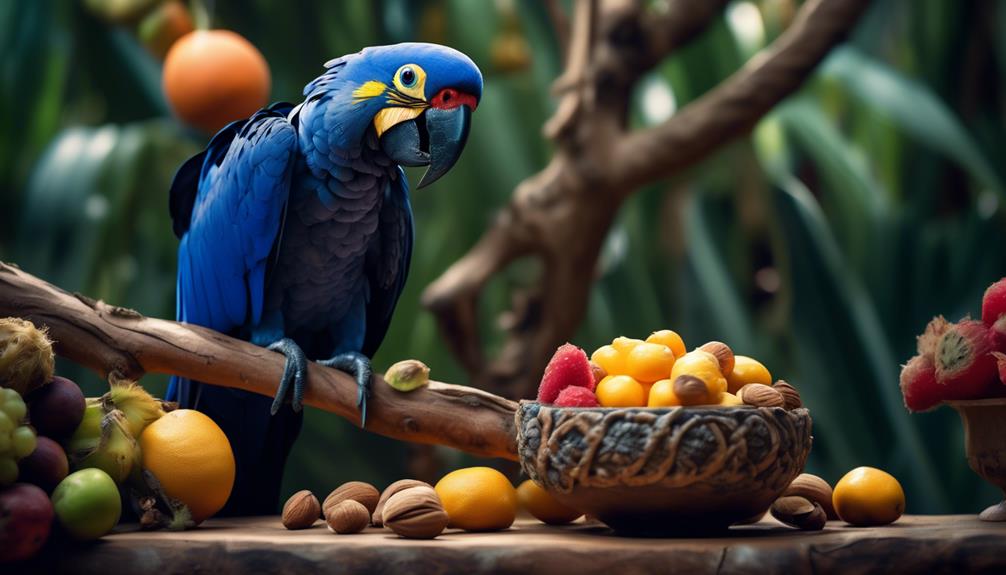
Taking proper care of a Hyacinth Macaw involves providing the right diet and ensuring their needs for exercise and grooming are met.
When it comes to their diet, these majestic birds require a variety of foods to thrive. Their diet should consist of fresh fruits and vegetables, coconut, macadamia nuts, and even cooked chicken or rice. It’s important to note that Hyacinth Macaws need a higher dose of fat compared to other parrots.
Additionally, they require regular fresh water and bathing to prevent dried feathers and skin issues.
Exercise is also crucial for a bird of this size, so providing ample room outside the cage and engaging in activities that promote physical activity is essential.
Size and Physical Characteristics
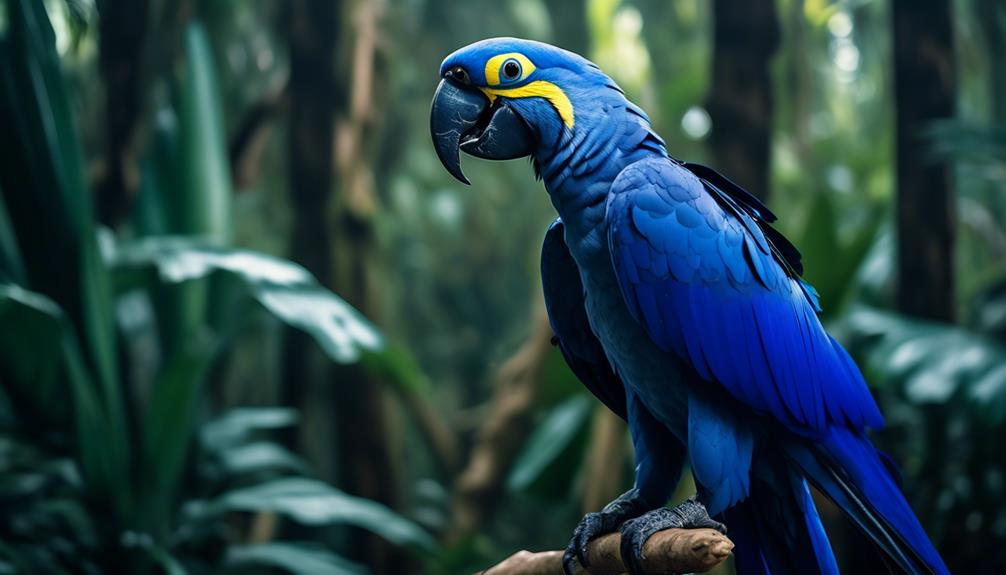
To properly understand the size and physical characteristics of the Hyacinth Macaw, it’s important to delve into their impressive stature and distinctive features.
- Standing at up to 3.3 feet tall, the Hyacinth Macaw is the largest flying parrot, commanding attention with its vibrant cobalt blue feathers and striking yellow details.
- With a wingspan of 3.4 feet, this majestic bird soars through the sky with grace and elegance.
- Its prominent black beak isn’t only visually striking, but also perfectly designed for opening walnuts and other shelled nuts.
These physical attributes contribute to the Hyacinth Macaw’s undeniable beauty and make it a truly mesmerizing creature to behold.
Training and Exercise Needs
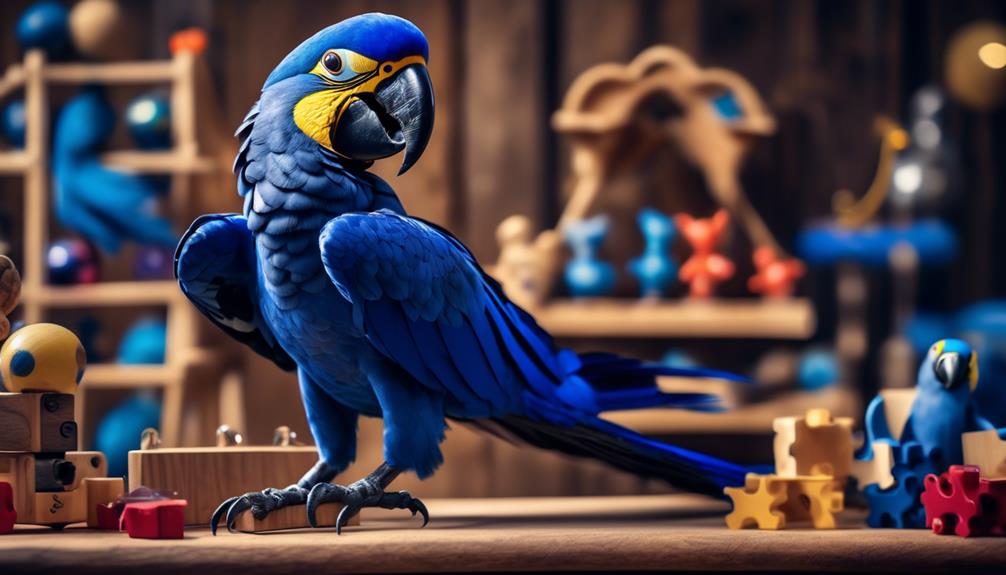
What are the training and exercise needs of the Hyacinth Macaw?
The Hyacinth Macaw requires regular exercise and ample room outside its cage due to its large size. Daily exercise is essential to prevent boredom and destructive behavior. These majestic birds enjoy activities like obedience training, agility, and playing fetch. They’re highly intelligent and respond well to positive reinforcement methods, making consistent and firm training necessary.
Mental and physical stimulation are crucial for their well-being. Additionally, early socialization and training can help prevent behavioral problems. It’s important to provide a proper diet and regular veterinary check-ups to maintain a healthy weight and address any health issues. While grooming needs are minimal, regular brushing is recommended to keep their feathers in good condition.
Health Considerations
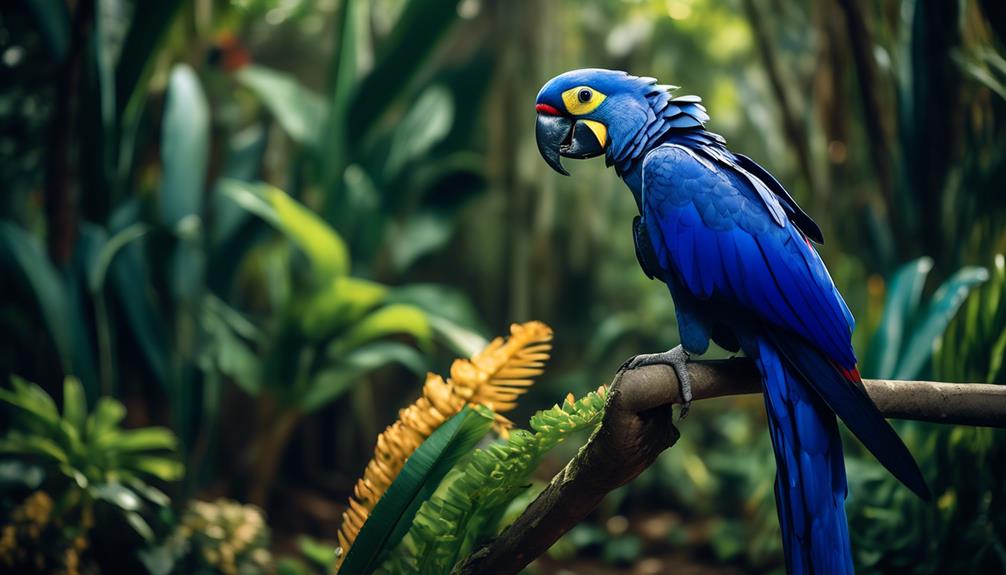
When considering the health of the Hyacinth Macaw, it’s important to be aware of potential health issues and the necessary steps to maintain their well-being.
Here are three key health considerations for these majestic birds:
- Proper diet: Hyacinth Macaws require a balanced diet consisting of fresh fruits, vegetables, nuts, and cooked chicken or rice. Their diet should contain a higher dose of fat compared to other parrots. Regular fresh water and bathing are also essential to prevent dried feathers and skin issues.
- Exercise and space: Due to their size, Hyacinth Macaws need ample room outside the cage and regular exercise to stay healthy. They enjoy flying and playing, so providing them with enough space and opportunities for physical activity is crucial.
- Regular veterinary check-ups: Hyacinth Macaws are prone to certain health issues, such as respiratory problems and feather disorders. Regular visits to the vet can help prevent and address any potential health concerns, ensuring the well-being of these rare and enchanting birds.
Frequently Asked Questions
Are Hyacinth Macaws Endangered?
Yes, hyacinth macaws are endangered. Their population has declined due to habitat loss and illegal trapping for the exotic pet trade. Conservation efforts are being made to protect and preserve this majestic species.
How Long Does It Take for a Hyacinth Macaw to Learn to Mimic Words and Sounds?
It takes a hyacinth macaw a varying amount of time to learn to mimic words and sounds. Each bird is unique and it depends on their individual abilities and training methods.
Can Hyacinth Macaws Be Trained to Perform Tricks or Follow Commands?
Yes, hyacinth macaws can be trained to perform tricks and follow commands. With proper training and positive reinforcement, they can learn a variety of behaviors and tasks, showcasing their intelligence and adaptability.
What Is the Average Price Range for a Hyacinth Macaw as a Pet?
The average price range for a hyacinth macaw as a pet can vary greatly, but you can expect to pay anywhere from $10,000 to $20,000 or even more for this rare and majestic bird.
Do Hyacinth Macaws Require Any Specific Vaccinations or Medical Treatments?
No, hyacinth macaws do not require any specific vaccinations or medical treatments. However, regular veterinary check-ups are important for their overall health. Keep an eye on their diet, exercise, and grooming to maintain their well-being.
Why are Hyacinth Macaws and Blue Throated Macaws considered rare and majestic?
Hyacinth Macaws and Blue Throated Macaws are considered rare and majestic due to their striking beauty and limited populations in the wild. The rare blue throated macaw is especially prized for its stunning blue and yellow plumage, making it a sought-after sight for birdwatchers and nature enthusiasts.
Conclusion
Get ready to be captivated by the rare and majestic beauty of the Hyacinth Macaw. With its striking cobalt blue feathers, vibrant yellow accents, and impressive size, this bird is truly a marvel of nature.
Not only is it a skilled mimic and suitable as a pet bird, but it also has specific care and feeding needs.
So, if you’re looking for a unique and enchanting companion, the Hyacinth Macaw is the perfect choice.


